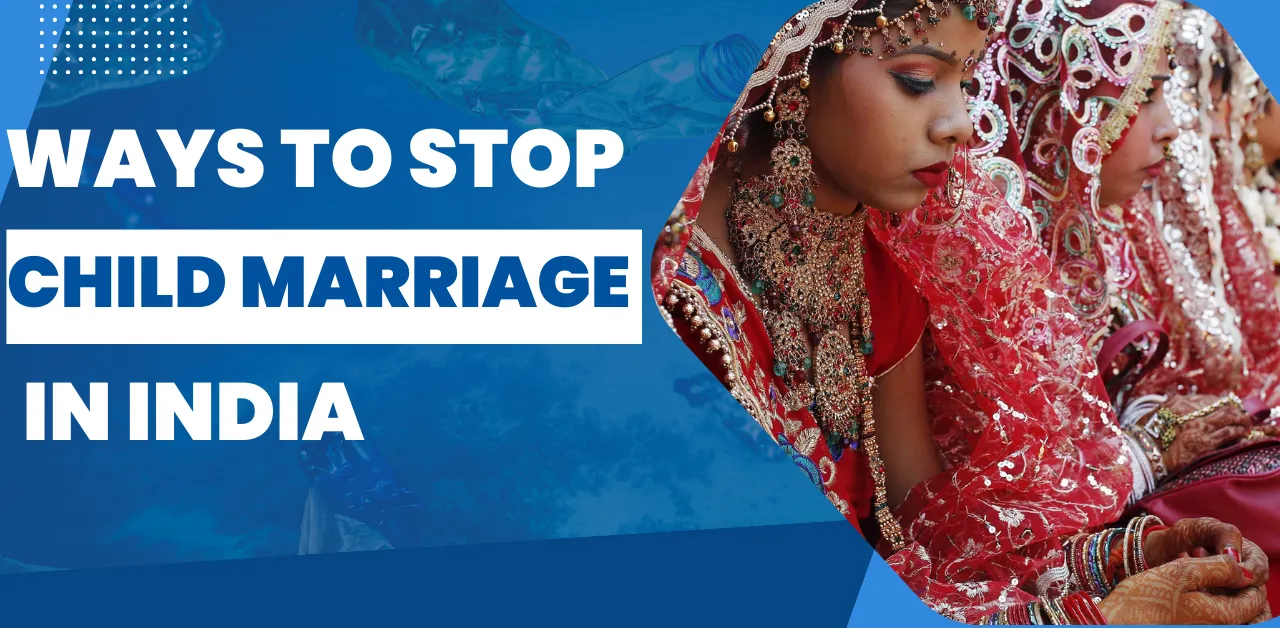Child marriage remains a pressing issue in India despite significant progress in recent years. Defined as the marriage of people below the age of 18, child marriage robs children, especially girls, of their childhood, education, and prospects. It perpetuates cycles of poverty, gender inequality, and social injustice. To combat this harmful practice, concerted efforts are needed from government, civil society, communities, and individuals. This article explores various ways to stop child marriage in India and ensure a brighter future for all children.
1. Legal Enforcement and Awareness:
Strengthening legal enforcement and raising awareness about existing laws against child marriage is crucial. The Prohibition of Child Marriage Act of 2006 prohibits the solemnisation of child marriages and provides for penalties for offenders. However, enforcement remains lax in many regions due to social norms and cultural practices. Increasing awareness about the legal implications of child marriage and promoting community participation in reporting violations can help deter the practice and hold perpetrators accountable.
2. Access to Education:
Education is a powerful tool for preventing child marriage and empowering girls. By providing quality education to all children, especially girls, governments and NGOs can break the cycle of poverty and gender inequality that leads to child marriage. Education empowers girls with the knowledge, aptitudes, and confidence to make educated decisions about their lives and future aspirations. Investing in girls’ education yields long-term benefits for individuals, families, and communities, contributing to economic development and social progress.
3. Economic Empowerment:
Poverty and economic insecurity are significant drivers of child marriage in India. Families living in poverty often view marriage as a means to alleviate financial burdens or secure a dowry. Interventions aimed at economic empowerment are essential to address this issue. Providing vocational training, microfinance initiatives, and livelihood opportunities for girls and their families can reduce financial pressures and create alternative pathways to empowerment. Financial independence enables girls to delay marriage, pursue education and career goals, and make autonomous life choices.
4. Community Mobilisation and Social Norms Change:
Community mobilisation and social norms change play a crucial role in challenging entrenched attitudes and practices that perpetuate child marriage. Engaging religious leaders, community elders, and influencers in dialogue and advocacy efforts can shift perceptions and foster support for ending child marriage. Promoting positive role models and stories of successful interventions can inspire communities to abandon harmful practices and embrace gender equality and human rights principles. Community-driven initiatives such as girls’ empowerment clubs, youth forums, and peer education programs can empower young people to become agents of change within their communities.
5. Health and Well-being Services:
Access to comprehensive health and well-being services is essential for preventing child marriage and supporting at-risk individuals. Health interventions, including reproductive health education, family planning services, and access to contraceptives, can empower girls to make informed decisions about their bodies and future reproductive choices. Additionally, providing support services for survivors of child marriage, including counselling, legal assistance, and shelter, is critical for addressing the physical, emotional, and social consequences of early marriage.
6. Multi-Sectoral Collaboration and Policy Integration:
Addressing child marriage requires a multi-sectoral approach that integrates efforts across various domains, including education, health, child protection, gender equality, and social welfare. Governments, NGOs, civil society organisations, and development partners must collaborate to create and execute comprehensive strategies that tackle the underlying causes of child marriage and advocate for sustainable solutions. Policy integration ensures that efforts to stop child marriage are mainstreamed into broader development agendas, such as poverty reduction, gender equality, and human rights promotion.
Final Thought:
Stopping child marriage in India requires concerted efforts at multiple levels. By addressing the root causes of child marriage and promoting holistic solutions that empower girls, engage communities, and transform social norms, you can build a tomorrow where every child has the opportunity to thrive, fulfil their potential, and contribute to a more equitable and just society. Together, you can end child marriage and build a brighter future for generations to come.

Jasper Bruxner is a passionate and versatile blogger with a keen eye for trends and a knack for crafting engaging content. As the founder of WendyWaldman.com, he has established himself as a trusted resource in a diverse range of niches, including food, tech, health, travel, business, lifestyle, and news. He tends to share the latest tech news, trends, and updates with the community built around Wendywaldman. His expertise and engaging writing style have attracted a loyal following, making him a respected voice in the online community.




